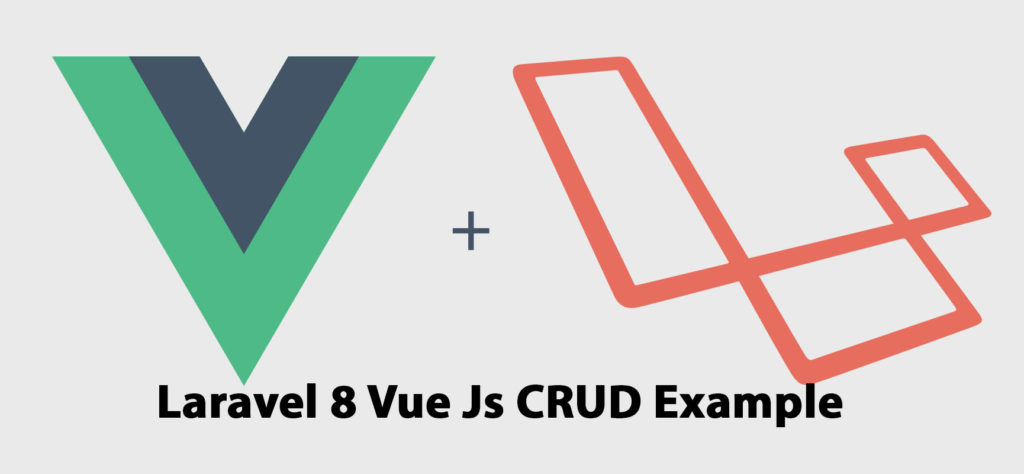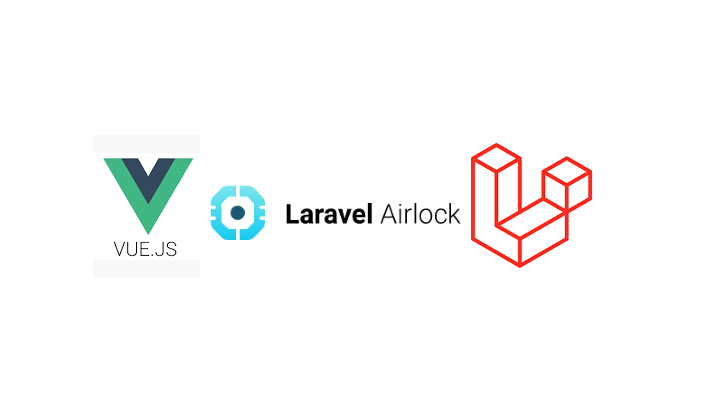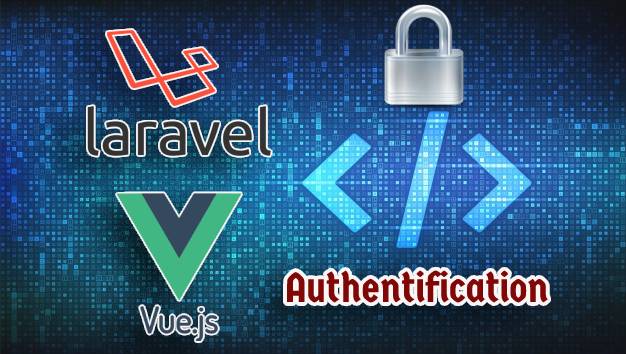
In this Laravel Vue.js Crud Example, You will learn how to implement Laravel Vue.js crud (create, read, update, and delete) spa (Single Page Application) with Vue.js , Vue Router , and Laravel Framework .
In today’s, the most popular JS frameworks are Angular JS and Vue JS. Angular JS and Vue JS are very user-friendly JS frameworks and most popular. It provides to manage the whole project or application without refresh page and powerful jquery validation.
Vue comes pre-packaged with Laravel (along with Laravel Mix , an excellent build tool based on webpack ) and allows developers to start building complex single-page applications without worrying about transpilers, code packaging, source maps, or any other ‘dirty’ aspects of modern frontend development.
Laravel Vue JS CRUD Application (SPA) Example:
- Install Laravel Project
- Configure Database Details
- Install NPM Dependencies
- Create Migration, Model, and Controller
- Define Routes In web.php
- Create a Vue App
- Create Component For Vue App
- Define Route For Crud App in Vue Router
- Include Vue.js Dependencies to app.js
- Update webpack.mix.js
- Run Development Server
Server Requirements
PHP 7.4
Laravel 8.x
MySQL
1. Install Laravel Project
First, open Terminal and run the following command to create a fresh laravel project:
composer create-project --prefer-dist laravel/laravel crud-spaor, if you have installed the Laravel Installer as a global composer dependency:
laravel new crud-spa
2. Configure Database Details:
After, Installation Go to the project root directory, open .env file, and set database detail as follow:
DB_CONNECTION=mysql
DB_HOST=127.0.0.1
DB_PORT=3306
DB_DATABASE=<DATABASE NAME>
DB_USERNAME=<DATABASE USERNAME>
DB_PASSWORD=<DATABASE PASSWORD>3. Install NPM Dependencies
Run the following command to install frontend dependencies:
npm installNext, install vue , vue-router and vue-axios . Vue-axios will be used for calling Laravel backend API. Run the following command on the terminal:
npm install vue vue-router vue-axios --saveRead Also: Laravel Livewire Crud Tutorial
3. Create Migration, Model, and Controller
Create a Category model, migration, and controller. Run the following command for that:
php artisan make:model Category -mcr-mcr this argument will create Model, Migration, and Controller in Single Command.
Now, Open migration file of category from database / migration and replace code in up () function:
public function up()
{
Schema::create('categories', function (Blueprint $table) {
$table->bigIncrements('id');
$table->string('title');
$table->text('description');
$table->timestamps();
});
}Migrate the database using the following command:
php artisan migrateNow, Open Category.php model from app / Models and update code into Category.php Model:
<?php
namespace App\Models;
use Illuminate\Database\Eloquent\Factories\HasFactory;
use Illuminate\Database\Eloquent\Model;
class Category extends Model {
use HasFactory;
protected $fillable = ['title','description'];
}
?>
Next, Open CategoryController.php and add code in index, store, update, and delete methods as a following:
<?php
namespace App\Http\Controllers;
use App\Models\Category;
use Illuminate\Http\Request;
class CategoryController extends Controller
{
/**
* Display a listing of the resource.
*
* @return \Illuminate\Http\Response
*/
public function index()
{
$categories = Category::all(['id','title','description']);
return response()->json($categories);
}
/**
* Store a newly created resource in storage.
*
* @param \Illuminate\Http\Request $request
* @return \Illuminate\Http\Response
*/
public function store(Request $request)
{
$category = Category::create($request->post());
return response()->json([
'message'=>'Category Created Successfully!!',
'category'=>$category
]);
}
/**
* Display the specified resource.
*
* @param \App\Models\Category $category
* @return \Illuminate\Http\Response
*/
public function show(Category $category)
{
return response()->json($category);
}
/**
* Update the specified resource in storage.
*
* @param \Illuminate\Http\Request $request
* @param \App\Models\Category $category
* @return \Illuminate\Http\Response
*/
public function update(Request $request, Category $category)
{
$category->fill($request->post())->save();
return response()->json([
'message'=>'Category Updated Successfully!!',
'category'=>$category
]);
}
/**
* Remove the specified resource from storage.
*
* @param \App\Models\Category $category
* @return \Illuminate\Http\Response
*/
public function destroy(Category $category)
{
$category->delete();
return response()->json([
'message'=>'Category Deleted Successfully!!'
]);
}
}
5. Define Routes In web.php
Now define routes in web.php and api.php routes file. Go to routes folder and open web.php and api.php file and update the following routes:
routes / web.php
<?php
Route::get('{any}', function () {
return view('app');
})->where('any', '.*');routes / api.php
<?php
Route::resource('category',App\Http\Controllers\CategoryController::class)->only(['index','store','show','update','destroy']);
6. Create a Vue App
In this step, go-to resource / views directory, create the app.blade.php file, and add the following code to app.blade.php as follow:
<!doctype html>
<html lang="{{ str_replace('_', '-', app()->getLocale()) }}">
<head>
<meta charset="utf-8">
<meta name="viewport" content="width=device-width, initial-scale=1">
<meta name="csrf-token" value="{{ csrf_token() }}"/>
<title>Laravel Vue CRUD App - TechvBlogs</title>
<link href="https://fonts.googleapis.com/css?family=Nunito:200,600" rel="stylesheet" type="text/css">
<link href="https://cdn.jsdelivr.net/npm/bootstrap@5.0.0-beta1/dist/css/bootstrap.min.css" rel="stylesheet" integrity="sha384-giJF6kkoqNQ00vy+HMDP7azOuL0xtbfIcaT9wjKHr8RbDVddVHyTfAAsrekwKmP1" crossorigin="anonymous">
<link href="{{ mix('css/app.css') }}" type="text/css" rel="stylesheet"/>
</head>
<body>
<div id="app">
</div>
<script src="{{ mix('js/app.js') }}" type="text/javascript"></script>
</body>
</html>7. Create Component For Vue App
In this step, go-to the resource / js folder, create components folder, and create files as following:
- View app
- Welcome.vue
- Category / List.vue
- Category / Add.vue
- Category / Edit.vue
App.vue is the main file of our Vue app. We will define router-view in that file. All the routes will be shown in App.vue file.
Open Welcome.vue file and Update the following code into that file:
<template>
<div class="container mt-5">
<div class="col-12 text-center">
<h1>TechvBlogs</h1>
<a href="https://techvblogs.com?utm_source=blogExampleRepo" target="_blank">Visit For More Blogs</a>
</div>
</div>
</template>
Open App.vue file and Update the following code into that file:
<template>
<main>
<nav class="navbar navbar-expand-lg navbar-dark bg-dark">
<div class="container-fluid">
<router-link to="/" class="navbar-brand" href="#">Laravel Vue Crud App - TechvBlogs</router-link>
<div class="collapse navbar-collapse">
<div class="navbar-nav">
<router-link exact-active-class="active" to="/" class="nav-item nav-link">Home</router-link>
<router-link exact-active-class="active" to="/category" class="nav-item nav-link">Category</router-link>
</div>
</div>
</div>
</nav>
<div class="container mt-5">
<router-view></router-view>
</div>
</main>
</template>
<script>
export default {}
</script>Next, Open resource / js / components / category / List.vue and add following code into file:
<template>
<div class="row">
<div class="col-12 mb-2 text-end">
<router-link :to='{name:"categoryAdd"}' class="btn btn-primary">Create</router-link>
</div>
<div class="col-12">
<div class="card">
<div class="card-header">
<h4>Category</h4>
</div>
<div class="card-body">
<div class="table-responsive">
<table class="table table-bordered">
<thead>
<tr>
<th>ID</th>
<th>Title</th>
<th>Description</th>
<th>Actions</th>
</tr>
</thead>
<tbody v-if="categories.length > 0">
<tr v-for="(category,key) in categories" :key="key">
<td>{{ category.id }}</td>
<td>{{ category.title }}</td>
<td>{{ category.description }}</td>
<td>
<router-link :to='{name:"categoryEdit",params:{id:category.id}}' class="btn btn-success">Edit</router-link>
<button type="button" @click="deleteCategory(category.id)" class="btn btn-danger">Delete</button>
</td>
</tr>
</tbody>
<tbody v-else>
<tr>
<td colspan="4" align="center">No Categories Found.</td>
</tr>
</tbody>
</table>
</div>
</div>
</div>
</div>
</div>
</template>
<script>
export default {
name:"categories",
data(){
return {
categories:[]
}
},
mounted(){
this.getCategories()
},
methods:{
async getCategories(){
await this.axios.get('/api/category').then(response=>{
this.categories = response.data
}).catch(error=>{
console.log(error)
this.categories = []
})
},
deleteCategory(id){
if(confirm("Are you sure to delete this category ?")){
this.axios.delete(`/api/category/${id}`).then(response=>{
this.getCategories()
}).catch(error=>{
console.log(error)
})
}
}
}
}
</script>
Next, open resource / js / components / category / Add.vue and update following code into file:
<template>
<div class="row">
<div class="col-12">
<div class="card">
<div class="card-header">
<h4>Add Category</h4>
</div>
<div class="card-body">
<form @submit.prevent="create">
<div class="row">
<div class="col-12 mb-2">
<div class="form-group">
<label>Title</label>
<input type="text" class="form-control" v-model="category.title">
</div>
</div>
<div class="col-12 mb-2">
<div class="form-group">
<label>Description</label>
<input type="text" class="form-control" v-model="category.description">
</div>
</div>
<div class="col-12">
<button type="submit" class="btn btn-primary">Save</button>
</div>
</div>
</form>
</div>
</div>
</div>
</div>
</template>
<script>
export default {
name:"add-category",
data(){
return {
category:{
title:"",
description:""
}
}
},
methods:{
async create(){
await this.axios.post('/api/category',this.category).then(response=>{
this.$router.push({name:"categoryList"})
}).catch(error=>{
console.log(error)
})
}
}
}
</script>Next, open resource / js / components / category / Edit.vue and update following code into file:
<template>
<div class="row">
<div class="col-12">
<div class="card">
<div class="card-header">
<h4>Update Category</h4>
</div>
<div class="card-body">
<form @submit.prevent="update">
<div class="row">
<div class="col-12 mb-2">
<div class="form-group">
<label>Title</label>
<input type="text" class="form-control" v-model="category.title">
</div>
</div>
<div class="col-12 mb-2">
<div class="form-group">
<label>Description</label>
<input type="text" class="form-control" v-model="category.description">
</div>
</div>
<div class="col-12">
<button type="submit" class="btn btn-primary">Update</button>
</div>
</div>
</form>
</div>
</div>
</div>
</div>
</template>
<script>
export default {
name:"update-category",
data(){
return {
category:{
title:"",
description:"",
_method:"patch"
}
}
},
mounted(){
this.showCategory()
},
methods:{
async showCategory(){
await this.axios.get(`/api/category/${this.$route.params.id}`).then(response=>{
const { title, description } = response.data
this.category.title = title
this.category.description = description
}).catch(error=>{
console.log(error)
})
},
async update(){
await this.axios.post(`/api/category/${this.$route.params.id}`,this.category).then(response=>{
this.$router.push({name:"categoryList"})
}).catch(error=>{
console.log(error)
})
}
}
}
</script>
8. Define Route For Crud App in Vue Router
Now, You need to define Vue routes, so go to resource / js folder, create routes.js file and update the followings code into the file:
const Welcome = () => import('./components/Welcome.vue' /* webpackChunkName: "resource/js/components/welcome" */)
const CategoryList = () => import('./components/category/List.vue' /* webpackChunkName: "resource/js/components/category/list" */)
const CategoryCreate = () => import('./components/category/Add.vue' /* webpackChunkName: "resource/js/components/category/add" */)
const CategoryEdit = () => import('./components/category/Edit.vue' /* webpackChunkName: "resource/js/components/category/edit" */)
export const routes = [
{
name: 'home',
path: '/',
component: Welcome
},
{
name: 'categoryList',
path: '/category',
component: CategoryList
},
{
name: 'categoryEdit',
path: '/category/:id/edit',
component: CategoryEdit
},
{
name: 'categoryAdd',
path: '/category/add',
component: CategoryCreate
}
]Here we used lazy loading components. Vue JS handles loading components lazily with routes, so on the DOM, you can load components only when they are needed through routes.
9. Include Vue.js Dependencies to app.js
Now, you need to add all routes, vue-axios, and other dependencies.
resource / js / app.js
require('./bootstrap');
import vue from 'vue'
window.Vue = vue;
import App from './components/App.vue';
import VueRouter from 'vue-router';
import VueAxios from 'vue-axios';
import axios from 'axios';
import {routes} from './routes';
Vue.use(VueRouter);
Vue.use(VueAxios, axios);
const router = new VueRouter({
mode: 'history',
routes: routes
});
const app = new Vue({
el: '#app',
router: router,
render: h => h(App),
});10. Update webpack.mix.js
webpack.mix.js
const mix = require('laravel-mix');
/*
|--------------------------------------------------------------------------
| Mix Asset Management
|--------------------------------------------------------------------------
|
| Mix provides a clean, fluent API for defining some Webpack build steps
| for your Laravel applications. By default, we are compiling the CSS
| file for the application as well as bundling up all the JS files.
|
*/
mix.js('resources/js/app.js', 'public/js')
.postCss('resources/css/app.css', 'public/css', [
//
]).vue();
11. Run Development Server
Open terminal and run this command:
npm run watchphp artisan serveOpen localhost: 8000 in the browser.
It’d be a good idea to follow along with the simple demo app that can be found in this GitHub repo .
If you have any queries or doubts about this topic please feel free to contact us . We will try to reach you.




